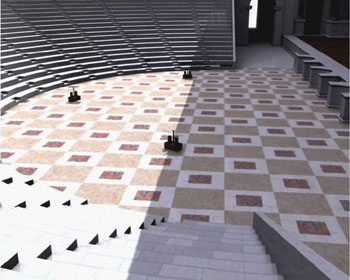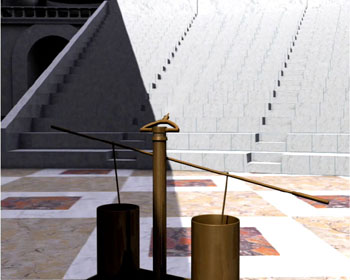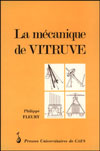Columnae Herculis II (Nova Roma)
(images rearrangement) |
m (Added Hp tag) |
||
| (4 intermediate revisions by 2 users not shown) | |||
| Line 1: | Line 1: | ||
| + | {{HistoricalDocument}} | ||
{|width="100%" | {|width="100%" | ||
|- | |- | ||
| Line 9: | Line 10: | ||
|- | |- | ||
| − | |width="100%" colspan="3"|{{CH_WebzineBox | title=" | + | |width="100%" colspan="3"|{{CH_WebzineBox | title=" The race for the honours " - First part| content= |
| − | ::::Article | + | ::::Article and English translation: [[Marcus Iulius Perusianus (Nova Roma)|Marcus Iulius Perusianus]] |
| − | + | ::::From: Italia Nova Roma webzine: [http://www.pomerium.org/pomerivm.htm POMERIUM] - {{2007}} edition. | |
| − | ::::From: Italia Nova Roma webzine: [http://www.pomerium.org/pomerivm.htm POMERIUM] - | + | |
| − | + | ||
| − | + | ||
| − | + | ||
| − | + | ||
---- | ---- | ||
| + | For centuries the main goal for a young Roman coming from of noble family was, with some exceptions, to be appointed in all the public career offices, step by step, one after the other to the top. That is to say to walk on the route of the cursus honorum, a race to get the greatest recognition in ordinary times for the Res Publica, to be a Consul, even better if made at the right age. The Consulship was a very longed-for office, so important that the Romans used to cite the year in connection to the names of two Consules ruling that same year (eponym). Technically the very last passage in this path to get the honour was the office of Censor, but even if you got there later, it was a position of smaller importance. The more you climbed in this pyramidal system the more importance and responsibility you got, like in a game to successive levels of difficulty; rules were established by law and more often from the tradition and habit. The mos maioroum, the custom of the ancestors, regulated it still before the Lex Villia De Annalis in 180 BC was written (Livy XL, 44). The roots of the cursus sank in the royal age, probably imported from the Etruscans. The Romans exalted the public career so that you often find all the different offices kept by a man in his honorary or funerary epigraphs (ascending, descending or on a personalised order). | ||
| − | + | Such writings were so common that the understanding of the abbreviations wasn’t really a problem for the simple citizen (from the simple and prestigious "COS" for Consul, to the most enigmatic one "IIIVIR AAAFF" for the tresviro monetalis aere auro argento flando feriundo, a man appointed to control coin making process). | |
| − | + | ||
| + | Of course the complete steps of the cursus honorum had dozens variations in time and different also at the same age. We try to describe here a senatorial path, with any doubt the most prestigious, open only to young free male and elected members (ingenuous), having a specific age. And trying to describe what happened in Rome in the last century BC. In imperial age the cursus underwent several transformations, mainly because the emperor took charge of what were earlier free elective offices. At the apex of the republican period at least another standard route was commonly followed: the equestrian career, not counting many others to get the top of the local governments in the towns or for the professionals in the collegia (profession groups). | ||
| + | |||
| + | The election in the assemblies was a characteristic of the offices of the magistracy, and a magistrate was called anyone had an assignment of the cursus honorum. Men through the public career were involved in different fields: from being a soldier to a mere administrative duty or in trials, on both sides of advocacy and the judgement. Being the magistracy a duty with no remuneration, it was often reserved for the most noble and rich families, the only ones who could afford a whole year or more without expecting any formal rewards, but honours. Besides big capitals served to the young noble man also to influence the masses making favours or organising games during the expensive election campaigns, in a system where nepotism and corruption commonly were accepted and put into practice. | ||
| + | |||
| + | Another feature of the magistracy was the collegiality: the power derived from a position (potestas or imperium) was shared with at least another person. A magistrate was able to exercise a power unless a veto was raised, which could be imposed from a colleague or from a superior magistrate in the public career order; it was well described in the following sentence par maiorve potestas plus valeo, that is to say “ an equal or greater power does matter”. The magistracy lasted always for one year, except for the Censorship with eighteen months; in that period the officer could not be persecuted for his deeds when made according to his position: he was supposed to be judged only after the duty was over. Other common features for the magistrates were: the prohibition for a new election immediately at the conclusion of the other, and the prohibition of having more than a position at a time. | ||
| + | |||
| + | Stepping into the cursus honorum happened with a smaller magistracy, as a military Tribune, with the relevant power that the office guaranteed. Ten military years of service, usual from 17 to 27, and mainly employed in a General staff, was this first step. The twenty-four young Tribune, elected from the assemblies of the tribes (the name Tribune came from this term), were appointed as prefectus cohortis, tribunus militum or, if in the chivalry, as praefectus alae. These ranks were mainly honorary assignments, a distant memory of the period from 444 to 367 BC when the Tribunes were elected often in place of the Consules to cover their functions. Besides the military Tribunes were called either angusticlavius (angustus = narrow) or laticlavius (latus = wide) according to the width of the purple band that adorned their toga (wide only if they came from the senatorial rank). | ||
| + | |||
| + | Instead of the military career it was possible to run for some administrative offices that took the generic name of vigintiviri (that is "of twenty men"), vingintisexviri (twenty-six) before Augustus that abolished some positions. The vigintiviri of Augustus were constituted from three viri monetalis (employers in the mint for the coinage), ten stilibus iudicandis (presidents of smaller tribunals), four viarum curandum (two employers to the cleanliness of the urban streets and two for suburban) and three capitalis (employers for the executions). | ||
| + | |||
| + | After that the very political career began with an office called Questorship. The minimum age to be candidate to the twenty available positions, was 28; if the man wasn’t already in its ranks, the election allowed to enter the Senate (up to the Censors to replace the vacant places). The Quaestores were mainly helping some greater magistrates with often financial tasks. | ||
| − | : | + | After this position a double possibility: Aedilship (plebeian or curules) or the Tribunate of the Plebs. The Aediles were four: the curules two were chosen among the patricians and curules indicates a status coming from being able to put on the praetexta, a type of bordered toga with of a purple coloured wide band. Another symbol was the sella curulis, the seat inlaid in ivory. Once the same position, the Aedilis curulis and the plebeian Aedilis were separated in 367 BC, when from two they were made four to better follow their tasks as the surveillance on the maintenance of temples, public buildings and roads, as well as the organisation of the several games along the year in Rome. This was the reason why this position was very longed-for, for the great reputation that the games organisation gave . |
| − | : | + | |
| − | + | The other step after the Questorship was, as said before, the Tribunate of the Plebs: ten Tribunes representing the Roman people or the defence of their own interest, a conquest obtained previously against the patricians after the rebellion of 494 BC (at first the tribunes plebis were only in two). Their more important privilege was to be able to cast a veto on the proposals of the Senate, as well as the inviolability of their persons, this been derived from the holiness that was them attributed during the mandate. No one of the described positions could draw the auspices maiora (the greatest auspices) and hold the imperium: these were up to the greater magistracies, which we going to describe next | |
| − | + | ||
| + | (to be continued) | ||
---- | ---- | ||
}} | }} | ||
| Line 74: | Line 83: | ||
---- | ---- | ||
| − | + | '''Return:''' [[Columnae Herculis (Nova Roma)|Home page]] | |
| − | + | [[Category:Columnae Herculis]] | |
| − | + | ||
| − | + | ||
| − | + | ||
| − | + | ||
| − | + | ||
| − | + | ||
| − | + | ||
| − | + | ||
| − | + | ||
| − | + | ||
Latest revision as of 11:03, 28 June 2024
THIS IS AN ARCHIVED PAGE DOCUMENTING THE INTERNAL HISTORY OF NOVA ROMA: LEARN MORE ABOUT ARCHIVED PAGES
| ||||
Return: Home page |
||||




